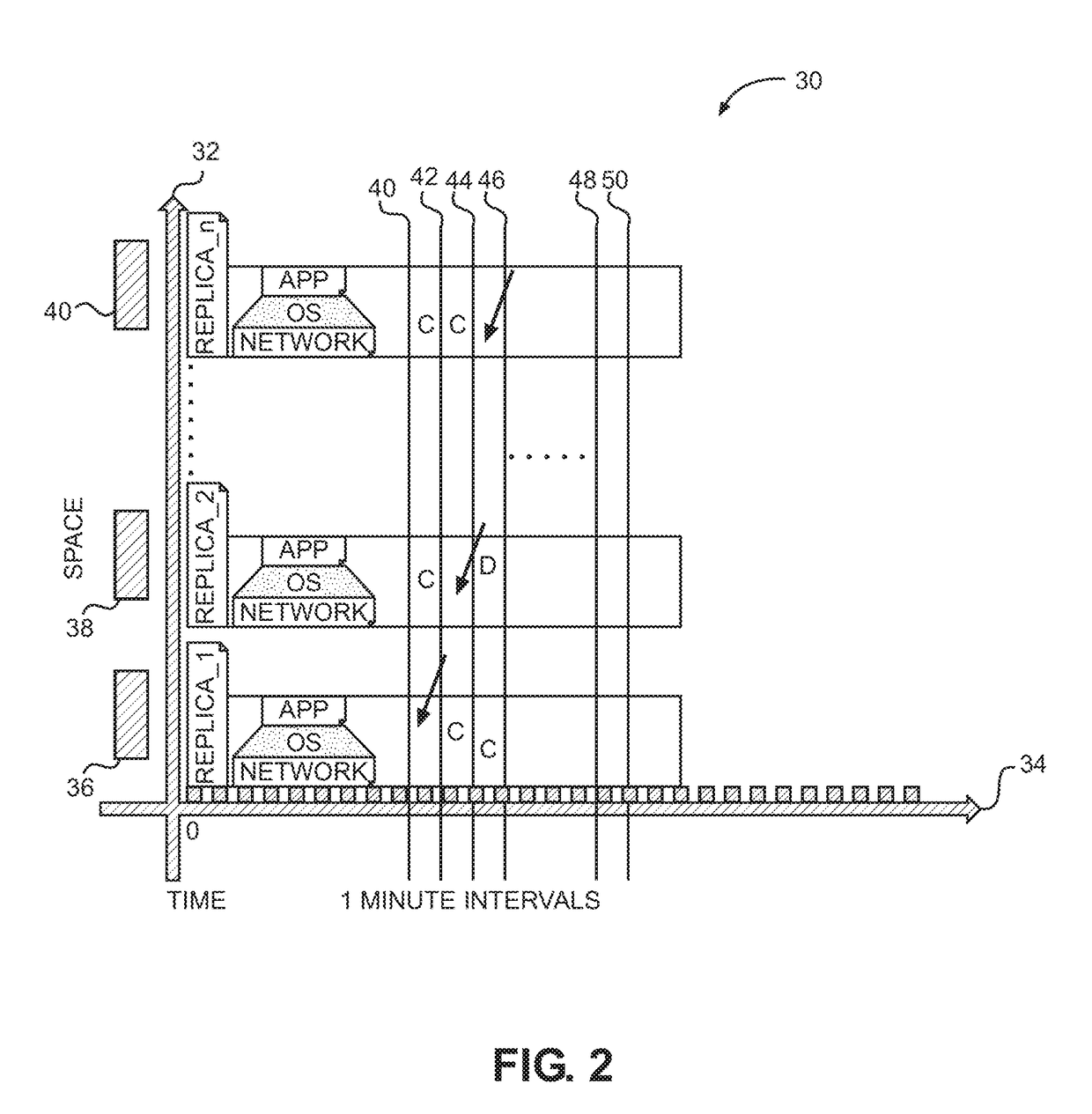Moving Target Defense for Distributed Systems
- Summary
- Abstract
- Description
- Claims
- Application Information
AI Technical Summary
Benefits of technology
Problems solved by technology
Method used
Image
Examples
Embodiment Construction
[0022]Overview
[0023]An attack-resilient framework employs a defensive security strategy to narrow the window of their vulnerability from hours / days to minutes / seconds. This is achieved by controlling the system runtime execution in time and space through diversification and randomization as a means of shifting the perception of the attackers' gain-loss balance. The goal of this defensive strategy, commonly referred to as Moving Target Defense (MTD), is to increase the cost of an attack on a system and to lower the likelihood of success and the perceived benefit of compromising it. This goal is achieved by controlling a node's exposure window of an attack through 1) partitioning its runtime execution in time intervals, 2) allowing nodes to run only with a predefined lifespan (as low as a minute) on heterogeneous platforms (i.e., different OSs), while 3) pro-actively monitoring their runtime below the OS. (The term “node” as used herein typically refers to a virtual machine unless the...
PUM
 Login to View More
Login to View More Abstract
Description
Claims
Application Information
 Login to View More
Login to View More - R&D
- Intellectual Property
- Life Sciences
- Materials
- Tech Scout
- Unparalleled Data Quality
- Higher Quality Content
- 60% Fewer Hallucinations
Browse by: Latest US Patents, China's latest patents, Technical Efficacy Thesaurus, Application Domain, Technology Topic, Popular Technical Reports.
© 2025 PatSnap. All rights reserved.Legal|Privacy policy|Modern Slavery Act Transparency Statement|Sitemap|About US| Contact US: help@patsnap.com



